As Saratoga Springs celebrates 150 years of thoroughbred racing, Liz O’Connell tells the tale of John Morrissey, an Irish immigrant who organized, operated and had the vision to develop what is now one of the world’s greatest racecourses.
A scant month after the Confederate Army was pushed back at Gettysburg, the “swells” holidaying in Saratoga Springs, New York, flocked to the first thoroughbred race meet contested on the Union Avenue trotting track. It was August 1863 and the meet lasted four days.
One hundred fifty years later, hundreds of thousands of fans trek annually to the peerless Saratoga Race Course, across the road from the site of those first races, for six weeks of the finest racing in America.
John Morrissey would be proud. That first, seminal meeting of thoroughbreds in 1863 was his brainchild that he organized, financed, operated and leveraged to immediate success. Charging $1 admission, Morrissey not only earned back his operating costs, he caught the interest of the men who would join him to form the Saratoga Association.
Cornelius “Commodore” Vanderbilt, Leonard Jerome, William Travers, John Purdy and John Hunter were the socially prominent public face of the Saratoga Association. Morrissey knew his background was too hardscrabble to position Saratoga racing at the top of the elite racing circuit. However, he was a major investor and the overall manager of the facility, ruling with the proverbial velvet-gloved iron hand behind the scenes.
The Far Side of The Moon
When John Morrissey was born in 1831 in Templemore, County Tipperary, the likelihood that in 32 years he would be running an elite race meet in upstate New York was as implausible as a Jules Verne adventure. In 1833, Timothy and Julia Morrissey, emigrated with their many daughters and only son, John. Eventually landing in Troy, New York, Timothy was a day-laborer providing a bare-bones existence for his family.
At 12, young Morrissey went to work in the mills of Troy. His earnings were needed by his family, and he was uninspired in the classroom. As he grew and physically matured, Morrissey worked in Troy’s iron works, becoming strong and impervious to physical stress.
In his off-hours, Morrissey knocked about Troy and environs, leading a gang and learning the ways of street fighting. In fact, his prowess with his fists led to work as a bouncer and security for any number of illicit enterprises. The docks and wharves along Troy’s riverfront offered larcenous, pugilistic, and romantic opportunities.
Working on the docks and as a steamboat deckhand, Morrissey’s horizons were expanding. He met Susie Smith, the daughter of steamboat captain Levi Smith, fancied her and realized he would need to step up in life to contend for her hand in marriage.
Morrissey was ambitious. He taught himself to read and write in his teens. After a two-month stint in the lock-up for an assault charge, and his relationship with Smith on the rocks, Morrissey decamped from Troy to base himself in New York City.
He had won fight after fight in Troy and sought professional fighting opportunities in New York. When he arrived in the city, however, he received a gang-beating
so severe it took him weeks to recover. He vowed revenge upon his assailants and systematically found each of them and took his retribution.
Morrissey’s size, skill and determination were noticed by Tammany Hall leaders, and he was engaged as an immigrant runner. As boats from Ireland docked at the wharves, Morrissey would meet the disembarking families and direct them to tenement housing. Soon enough, the new arrivals would be naturalized and become voters for Tammany politicians. Staying close to his fighting roots, Morrissey was also a “shoulder-thumper,” a Tammany enforcer. This was the brutal era so accurately portrayed in the Martin Scorsese film, The Gangs of New York.
It was during this period that Morrissey fought Tom McCann for the right to court Kate Ridgely. The brawlers overturned a woodstove, Morrissey was pinned to the coals and his clothes smoldered, giving him the sobriquet, “Old Smoke.”
Seeking Adventure and Fortune
Looking for a big score, Morrissey hatched a plan to go to California for the gold rush. He and his companion, Daniel “Dad” Cunningham stowed away on a series of boats to make their way to San Francisco. On the final leg of the trip, Morrissey saw a cabin boy severely berated by the ship’s captain and stepped in to defend him. The captain demanded to see Morrissey’s ticket. Upon learning Morrissey was a stowaway, the captain threatened to drop him off ashore. However, the passengers were threatening to revolt and the captain wisely enlisted Morrissey to protect him — promising a cabin and ship-fare in return. Morrissey and Cunningham menacingly quashed the uprising with nary a blow.
It turned out gold mining was not of interest to Morrissey. He preferred to profit from the miners coming back from the hills and provided them with gambling opportunities, mainly the card game faro.
While in California, Morrissey won his first professional bare-knuckle fight in 1852 against George Thompson. Finally he had earned some money fighting and decided it was time to find bigger opportunities in New York.
When he returned to New York, Morrissey bought into gambling houses, eventually starting his own. At the same time, he was back in the fold of Tammany Hall whose imprimatur protected his gambling endeavors. Fighting was still on his agenda though, and in 1853, a 37-round fight at Boston Corners, N.Y. against Yankee Sullivan gave him national champion bragging rights.
The Next Stage
Morrissey had never gotten over Susie Smith, his first love, and when the couple got together again and married in 1854, Morrissey promised to give up fighting. His bride was a graduate of what is now the Emma Willard School in Troy. She demanded better from John and he complied. Throughout their marriage, the affection and devotion between the pair never paled.
But there was one last fight for Morrissey. In 1858 he was badgered into meeting his childhood nemesis John “Benecia Boy” Heenan in the ring. The press keenly followed the preparations for the fight, noting that Susie had given her permission for one last battle. To circumvent the New York laws against fighting, the pair met in Long Point, Canada. Morrissey won in 11 rounds and retired permanently from the ring.
Powerful Friends
Turning his attention to his gambling enterprises and political affiliations, Morrissey amassed a fortune. It was time to start thinking about his legacy to his son, John Morrissey, Jr., born in 1855. Eventually, Morrissey upgraded his gambling and faro houses to elegant, well appointed casinos. With cash in hand, he played the stock market and sought to join the ranks of the gentlemen who ran New York. Morrissey struck up a friendship with Cornelius “Commodore” Vanderbilt, a sportsman and gambler as well as a game-changing transportation titan. Vanderbilt gambled in Morrissey’s establishments and Morrissey picked up stock tips from Vanderbilt. The two men got along well.
Vanderbilt was a tall, athletic man who was entirely self-made. His advantage over Morrissey was that he was born in America. Back then, no matter how successful or useful John Morrissey became, he could not overcome the pervasive discrimination against the Irish. Nonethe-less, it was this basis of mutual like and trust that would serve both Morrissey and Vanderbilt well when they formed the Saratoga Association.
Ah, Saratoga!
The summer of 1861 saw Susie and John Morrissey visit Saratoga Springs. Morrissey was casing out the town to set up a casino – the place was perfect, it was full of well-heeled vacationers with time and money. Morrissey opened a gambling house conveniently near the train station.
Morrissey’s casino operated during the evening and night hours. To keep his clients and their wives happy, they needed more diversions than the mineral springs during the day. This is where founding and running the Saratoga Race Course comes in. It gave people something fun to do. Going to the races was a means of daytime gambling, and kept visitors in town so they could frequent Morrissey’s casino at night. Later on, needing another daytime diversion, Morrissey also founded and ran regattas on Saratoga Lake. Perfect!
As he grew wealthier, Morrissey wielded considerable influence in politics and government circles. Still loosely affiliated with Tammany, he ran for Congress in New York’s 5th District in 1867 and won. Finally, he had a job that was legal and something he could proudly present to his son. Morrissey was easily re-elected to a second term. At last, tiring of the corruption rampant in Tammany Hall, he split to join the reformers in the Young Democracy in 1870. He did not seek re-election to Congress for a third term.
As John, Jr. grew older, he was afforded the privileges of wealth. He was well schooled and enjoyed an active life. There are stories of him owning trotting horses and of rowing in regattas on Saratoga Lake. He played baseball and was a member of a social club. Even though the father was still kept at arms length by the so-called elite, John, Jr. was a card carrying member of the young smart set.
In 1871 Morrissey opened his chef d’oeuvre, the Club House. Designed, built, and outfitted to be a gambling palace, the Club House drew the movers and shakers of the day. To keep peace in Saratoga Springs, Morrissey did not allow locals nor women to gamble there, and he was generous to local philanthropies and causes. He endowed schools, rescued homes from foreclosure, and donated to churches. His charity was wide reaching. There is a record of a donation of $500 to build the Cathedral of the Assumption in Thurles, Tipperary.
Like a dog with a bone, Morrissey could not give up politics. He ran for New York State Senate in 1875 and won on an anti-Tammany platform. He ran from another district and won in 1877.
A Great Loss
By this time, despite all his success, Morrissey had experienced his greatest loss. His son John, Jr. died of Bright’s Disease on Jan. 1, 1877. It was a blow, hard to recover from for his parents.
During a hard fought 1877 campaign for office, Morrissey’s health began to fail. After the election he went south for the winter, returning to New York in the spring no better. Morrissey wanted to return to Saratoga, for better or worse. He, Susie and a retinue of friends and family retainers stayed at the Adelphi Hotel. He died there on May 1, 1878, holding the hand of a priest.
The citizens of Saratoga paid their respects. Morrissey’s remains were taken to Troy where thousands of people streamed past the casket on view at his mother-in-law’s Troy manse. From there, to the church to the cemetery, the streets were lined with the working people that John Morrissey championed, who treasured him in return.
The Irish at Saratoga
The bond between the Irish and horses transcends generations. Irish emigrants to the United States and Irish Americans alike, have always been drawn to horses and at Saratoga you will find them all. Some are owners, jockeys and trainers, and others are there simply for fun, to place a wager and enjoy the style.
Michael Dilger left County Meath eight years ago to work with American trainer Todd Pletcher. This past January, Dilger struck out on his own and uses the Saratoga Race Course as his northern home base. “It’s a good place to train horses. We come in May and stay until the middle or end of October. Over here everybody is based at the racetrack, you have access to the same veterinarians, the same farriers that the top trainers have, so in a sense it’s a more level playing field as it’s accessible to trainers starting out,” Dilger says.
Over the meet’s opening weekend Dilger, established himself by winning the highly prized Sanford Stakes with Wired Bryan. Meanwhile, Irish jockeys Sean McDermott and Paddy Young also had winners. Riding Brainstorming, McDermott, from Tralee, Co. Kerry, won the Michael D. Walsh Novice Stakes, while the Irish-born Paddy Young, who makes his home in Unionville, PA, rode Mr. Hot Stuff to a win the 18th running of the A.P. Smithwick.
Opening day at Saratoga, is a feast of great racing and great fashion. In recent years, a return to bygone style has been embraced by race-goers. While not as over-the-top as the chapeaus at the Kentucky Derby, Saratoga keeps the edge with New York chic. Albany’s Kathleen Cronin sports to-die-for hats as part of her track ensembles. Cronin met her husband, Thomas Carr, at a Saratoga race day party, and they have made it an annual event ever since.
According to Cronin family lore, when grandfather was feeling feisty he would roll up his sleeves, put up his dukes, and challenge all comers – because he had “the blood of the fighting Irish Morrissey in his veins.” Kathleen is currently tracing her family and Morrissey’s roots to verify the claim.
“The John Morrissey story emphasizes two points: the Irish love affair with horses, and the contribution of Irish immigrants to American life,” said Brian Kavanagh, chief executive of Horse Racing Ireland and guest speaker at the annual Jockey Club roundtable in Saratoga Springs. He also paid tribute to Morrissey’s home county.
“Tipperary is at the heart of the Irish bloodstock industry, and it is highly appropriate that it was a Tipperary-man who had the vision to first develop what is now one of the world’s greatest racecourses,” says Kavanagh.
“Morrissey’s story is that of the Irish immigrant writ large,” says Ed Collins, chairman of the Irish American Heritage Museum in Albany. “Anyone who needs to be reminded about the lives of our Irish immigrant ancestors who struggled to help make America what it is today, need only spend a few hours tracing the footprints of Morrissey,” he added.
The Irish American Heritage Museum is celebrating the150th anniversary of thoroughbred racing in Saratoga Springs, with an exhibition on John Morrissey.
For more on the Irish American Heritage Museum, located at 370 Broadway in the heart of downtown Albany, visit:
www.irishamericanheritagemuseum.org
More photos:
_______________
The Saratoga Race track is now in its 160th year. This article was originally published in Irish America’s October / November 2013 issue. ♦

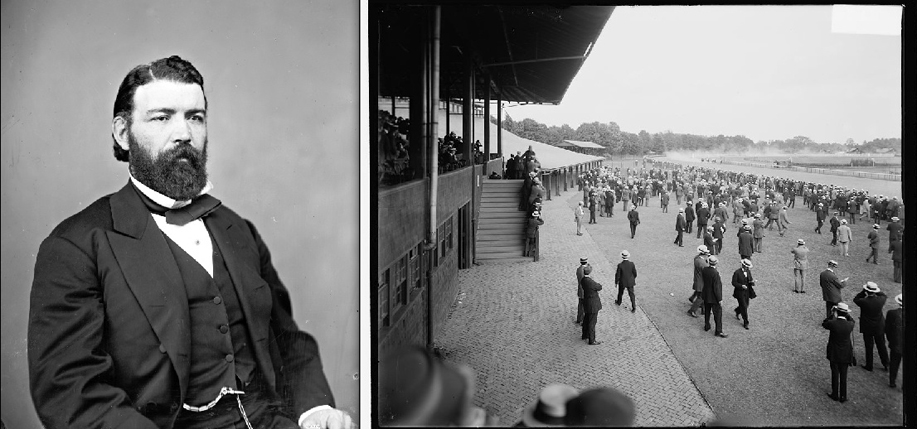
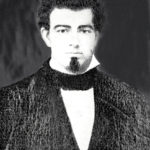
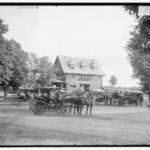

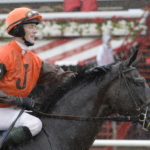
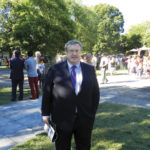
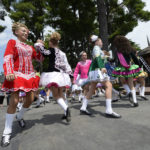
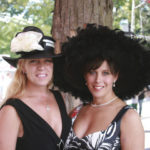
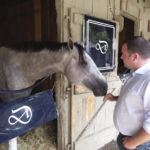
Wow, Ms. O’Connell, what a storyteller you are. And what a fighting Irishman you have shared with us.
Thanks. Love horses myself, those obedient beasts.
Peter Garland
Oakland
l done, Liz O’Connell! Always great to see John and Susannah Morrissey acknowledged for their contributions to Saratoga Springs. Susannah’s favorite place was Saratoga. Unlike in New York City and Troy where she struggled for social acceptance, at Saratoga, during the season, she was a leading lady, and the most fashionable of all the wealthy visitors.
John served as a commissioner for the development of Congress Park, where his Clubhouse would become the prominent feature. He and Susannah gave generously to many local causes (including paying for the bell for Church of Saint Peter and uniforms for Saratoga’s professional baseball team).
Notes of interest:
Morrissey did attempt to befriend Commodore Vanderbilt. He once gifted him one of the finest thoroughbred’s in the country (worth estimated at $10,000). Vanderbilt, in return, presented a gilded carriage to Susannah (said to be one of the most beautiful in Manhattan). True to form, however, Vanderbilt chose embellishing his personal fortunes to any “friendships.” He convinced Morrissey to invest most of his liquid wealth in a stock manipulation. Morrissey lost an estimated $700,000. Before he died, Morrissey said that, of all things, he wished that he had never met Cornelius Vanderbilt.
Upon his death, the once-rich Morrissey had virtually no assets to leave Susannah. In time she slid into poverty. During her final years she was nearly blind, and completely forgotten, except for an adopted son who send occasional money from California. She had truly gone from riches to rags. Her remains were buried with her husband and son in the family site at St. Peter’s Cemetery. There is no indication of her presence at the gravesite.
Susannah claimed, in interviews after her husband’s passing that he could neither read nor write when they married. She claims to have made his education a shared priority, with lessons (reading, writing, history, etc.) each night. Susannah was, with little doubt, the more materially ambitious of the couple. She enjoyed flaunting wealth and sought social status for herself and their only son. She lost numerous children during pregnancies and one after a few days of life.
Frank- I’m so pleased you reported Susannah’s life (though sad) post John. I live in Troy and have been researching to find out what happened to her, to no avail! How did you learn of this? Could you share with me because all I’ve read over the past two years (even asking the curators at Canfield Casino) cannot say what happened to Susannah. An adopted son is fascinating! TY for sharing and I’d like to know more.
Wonderful story ! Judy Collins
Hello Liz what a comprehensive story about John Morrissey. I married into a Morrissey family who we believe (in the absence of birth documents) came from the Tipperary area?
My husbands Great Uncle Harry Morrissey was the renowned Horse Starter for Kentucky Races, his father and mother were called John & Sarah who owned a horse farm.
There’s more to their history over in America but wondered if Harry could have been related to this John Morrissey, as in nephew? Harry came to the US when fe was a baby with his parents.
Hope you can confirm either way. (It’s funny that Harry had 2 surviving sons-John & Daniel).
This was a great read. I found it very interesting as i am related to this John Morrrissey. My great great grandmother was his sister Maggie.